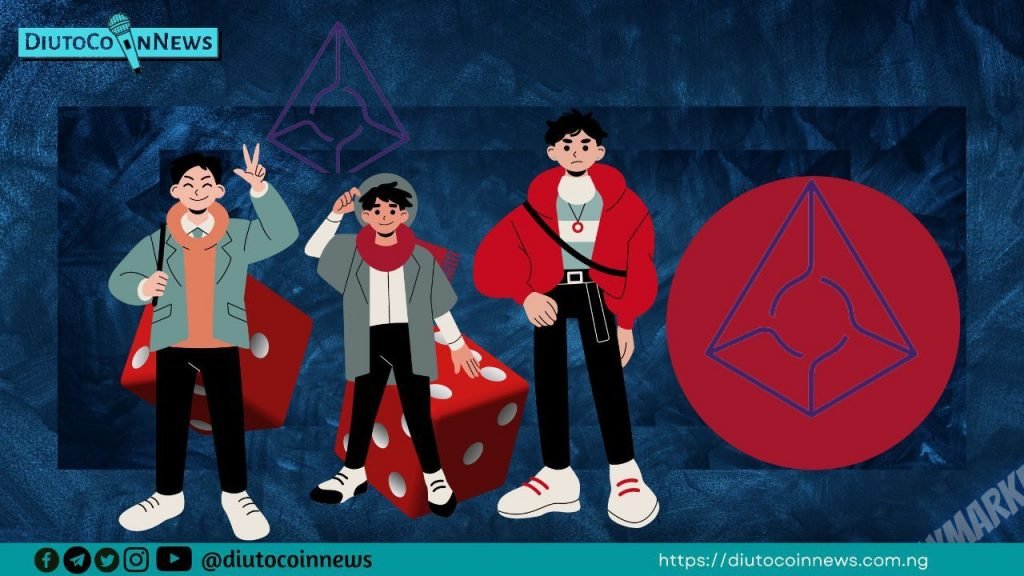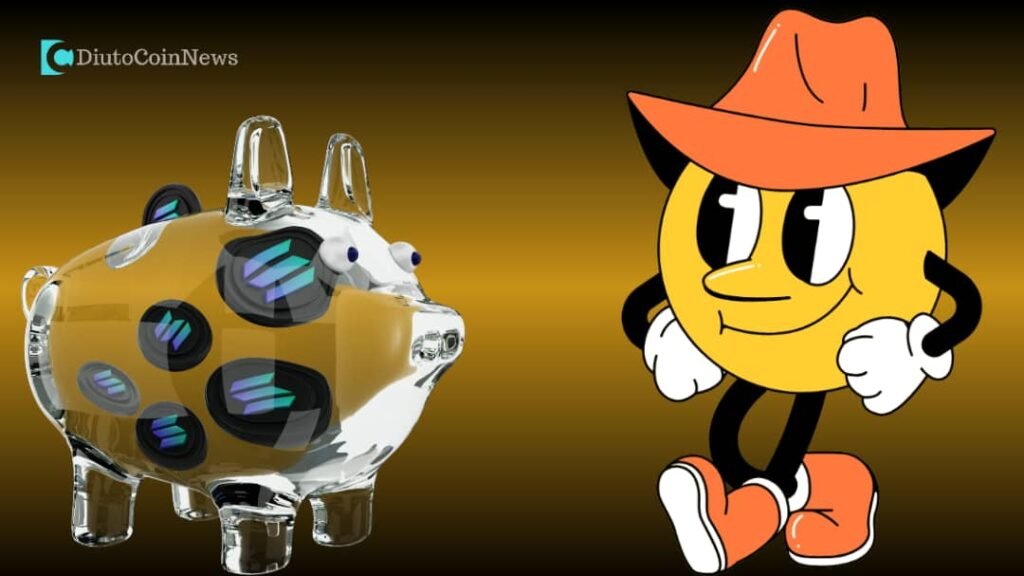- What is a Prediction Market
- What is Augur Prediction?
- Getting started with Augur Prediction
- 1. Wallet:
- 2. Cryptocurrencies Used In The AUGUR
- 3. Transaction Fees
- 3. Market Creation
- 4. Payout
- 5. Market Resolution
- Conclusion:
Last updated on April 23rd, 2022 at 11:55 am
Thank you for reading this post, don't forget to subscribe!

Today, We’ll break down Decentralised Prediction Markets in layman’s terms.
We will look at what prediction markets are and how they work, and why are they important?.
Furthermore, we will give you a beginner guide/review to Augur.
- What is Prediction Market.
- What is Augur Prediction.
- Getting started with Augur Prediction.
- Cryptocurrencies used in Augur.
- Payout and Market resolution
- Conclusion.
What is a Prediction Market
A prediction market is a market where people can buy and sell…predictions. Or, to be more precise, shares in predictions. You buy shares of a company on the stock market. In a prediction market, you buy shares as a result of an event. This might be anything in the future, such as whether it will rain in Seattle tomorrow, whether the US economy will grow next quarter, or whether Tinubu will be elected president of Nigeria in 2023.
Basically, prediction markets (also known as betting markets, information markets, decision markets, idea futures or event derivatives) are exchange-traded markets created for the purpose of trading the outcome of events
Prediction markets can help forecast any verifiable outcome whether political elections, the weather, economic growth, housing prices, or the spread of flu outbreaks.
Prediction markets not only extract existing knowledge but motivate the production of new knowledge. For example, prediction markets on the weather might motivate meteorologists to develop improved forecasting models. Prediction markets make the creation and revelation of knowledge competitive and meritocratic.
By compensating good predictions and imposing costs for bad ones, prediction markets reward greater leverage to so-called super forecasters over time while discouraging dishonest or inaccurate ones.
What is Augur Prediction?
Augur is a decentralized prediction market platform built on the Ethereum blockchain.[1] Augur is developed by Forecast Foundation, which was founded in 2014 by Jack Peterson, Joey Krug, and Jeremy Gardner. Forecast Foundation is advised by Ron Bernstein, founder of now-defunct company Intrade, and Ethereum founder Vitalik Buterin.
Augur is a global platform for no-limit betting. It’s a system that lets anyone, from anywhere, purchase and sell real-money interests in the outcomes of sporting events.
This may include betting on anything from the price of a cryptocurrency to the number of earthquakes that will strike California this year or the verification and implementation of a virus vaccine.
The Augur system, unlike traditional betting platforms, is built on the blockchain (Ethereum, in this case). This means Augur operates without the assistance of a central organization to facilitate trade and market creation and settlement. Augur, on the other hand, is run by its users, who are spread across the globe.
A market’s lifespan begins with its formation by a user at a high level (by defining the market question and rules of resolution). Users then buy and sell outcome tokens on a market, escrowing their bet amount into a smart contract in exchange for tokens that represent their stake.
A set of players known as reporters informs the smart contract who won after the market reaches its end date. The proceeds are then automatically paid to those who hold winning outcome tokens. Augur’s functioning is not controlled by a business or a central group, thus there are no expensive fees to pay in order to keep it running. Instead, winning traders pay tiny fees (typically about 1-2 per cent) to Augur, which are distributed between market makers and users who report on winning outcomes.
Another advantage of using a blockchain is that Augur cannot be shut down, modified, or restricted as long as the Ethereum network is operational. The Augur protocol cannot prevent any individual or group from exploiting its technology in any way they see fit. Augur is decentralized and censorship-resistant, which means that no markets or trading activity can be restricted.
Along with these features of building on blockchain, there are a few quirks for a starter.
Don’t worry, these may seem kind of strange at first, but you’ll be able to get them in no time.
Getting started with Augur Prediction
1. Wallet:
To connect to Augur, you’ll need a wallet. Fortunately, you may sign up for one of several options right on the app.
Your wallet is similar to Venmo or Cash App in that it can be used to log in and use money within apps (with the exception that your wallet provider cannot access your cash), but it can also be used to log in and use money outside of applications (like Augur). Unlike most apps, which require a separate log-in and password for each, your single Ethereum wallet allows you to log in and engage with the majority of Ethereum apps.
Your wallet shows you how much money you have and lets you send and receive money using your public and private keys.
Wallets will also give you a private key, which you can think of as a password required to access and spend the funds in your wallet.
If you lose your key to your wallet, there may be no way to help you regain access to it and your funds. Always keep your private key a secret and ensure that you have it safely backed up elsewhere.
2. Cryptocurrencies Used In The AUGUR
The digital money you keep inside of your wallet is called cryptocurrency. On Augur, you’ll only need to have DAI to bet. DAI is a cryptocurrency that attempts to mirror the dollar; meaning, generally, 1 DAI = 1 USD in value.
In most geographies, you can purchase DAI directly with a credit card; or you can purchase another cryptocurrency of your choice, such as ETH, which can be converted into DAI directly within the app.
When you wish to withdraw or move into fiat money, you’ll simply sell your DAI for the relevant currency.
3. Transaction Fees
While Augur features extremely low fees for winning traders, its blockchain implementation necessitates the payment of additional transaction fees (known as gas) for actions* such as taking trade from the order book (while making an unmatched trade does not require a fee).
*In addition, when you first sign up, activating your account will result in a one-time transaction charge, which allows you to bet and pay for petrol in the same currency, whereas you would otherwise have to use two different ones.
3. Market Creation
In addition to the above information, we’ll take a quick look at market creation, trading, and market resolution.
All markets are created by Augur users. These markets will seek to provide an objective answer to a question about a future event.
There are 3 types of markets available:
- YES/NO: “Will Peter win the popular vote in 2023…”
- Multiple Choice: “Which team will win the 2022 champions league…”
- Scalar: “How many inches of snowfall in Sioux Falls in 2020…”
The market creator can use a template or create a custom market. Template markets have more rigid controls but have a lesser likelihood of resolving as invalid*.
The Augur interface attempts to automatically filter out markets that have a sufficiently high (%) chance of resolving to an “invalid market”, based on how the outcomes are trading. As a trader, if you see a market trading with more than a 5% chance of resolving as invalid, it is advisable to proceed cautiously.
On top of defining the market details and questions, market creators designate an initial reporter of the outcome and set the fee which they receive from the market (as a % of open interest). Market creators must also put up two bonds, which are to be repaid on the condition the market resolves to a valid outcome and/or the initial reporter they designate shows up to report.
It is expected that the market creator also provides initial liquidity to kick off the ability for others to trade. Markets without liquidity will be filtered out by default.
4. Payout
If you wish to have your order filled immediately, you’ll want to ‘take’ orders directly from the order book. You can pre-fill the order ticket by simply clicking on the best price within the order book. While you will be subject to a transaction fee for taking the other side of an order that exists, you are ensured that your order is filled. If you wish to place an order above the current best ask or below the current best bid, your order will not be filled immediately (and perhaps not at all). However, if someone does end up filling your order, you will pay no transaction fee for the trade. The price of an outcome token correlates with the market’s belief in the probability of the event happening.
5. Market Resolution
The reporting procedure is where market resolution begins. At its most basic level, reporting occurs when a group of players gathers to determine the results of a market in order to pay the winners and conclude the market. The reporting phase begins once the market’s end date has been reached, with specified reporting. When a market enters reporting, the designated reporter (usually the creator) has 24 hours to provide a report on the market’s outcome.
Market resolution starts with the reporting process. At a high level, reporting is when a group of participants come together to determine the results of a market; so that the winners may be paid and the market resolved.
After the market’s end date is reached, the reporting phase begins with designated reporting. Once a market enters reporting, the designated reporter, chosen during market creation (and typically the creator, themselves) has 24 hours to submit a report on the market’s outcome.
Whichever outcome the designated reporter selects becomes the tentative winning outcome. Once a designated reporter submits the tentative winning outcome, it is open to dispute.
A dispute is triggered when reporters stake enough money (in the form of Augur’s REP token) on an outcome other than the tentative winning outcome. This is called the dispute bond.
Once a market fails to be disputed in the initial 24 hours, or a disputed outcome fails to fill the required dispute bond, the market finalizes and those who hold winning outcome tokens are able to claim proceeds.
Conclusion:
Augur can be difficult to grasp if you’re inexperienced with the fundamental ideas of blockchain and cryptocurrency. But don’t worry; these ideas are more intuitive than they appear at first look.
Are you already using the Augur prediction market or you are planning to use the platform, kindly drop your experience in the comment section,
If you have any additional questions, please join our community on telegram,
Follow us on our social media platforms.
























